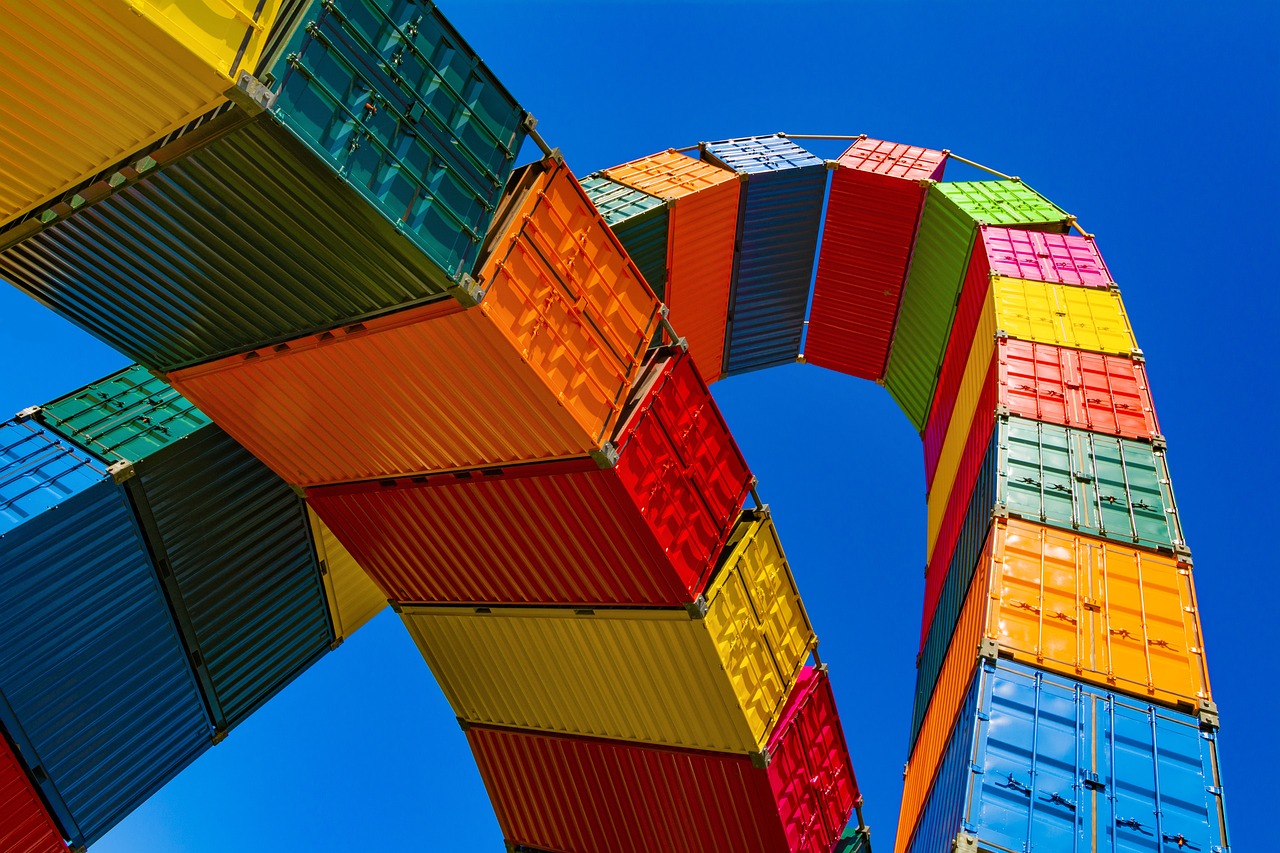India: the many Facets of a land of Opportunities
The world economy is shifting its gravity centre increasingly to the East and India is gaining in importance. But there is no shortage of challenges
Published by Marzia Moccia. .
Export markets Foreign markets Foreign market analysis
Log in to use the pretty print function and embed function.
Aren't you signed up yet?
signup!
In the current economic situation, India is undoubtedly a geography to be monitored. It is the most populous country in the world after China and the fifth largest economy in the world, with particularly positive GDP growth prospects: in fact, the International Monetary Fund estimates an average annual growth rate of 6.5% for the two-year period 2023-2024, giving the country a leading role in terms of its contribution to world economic growth.
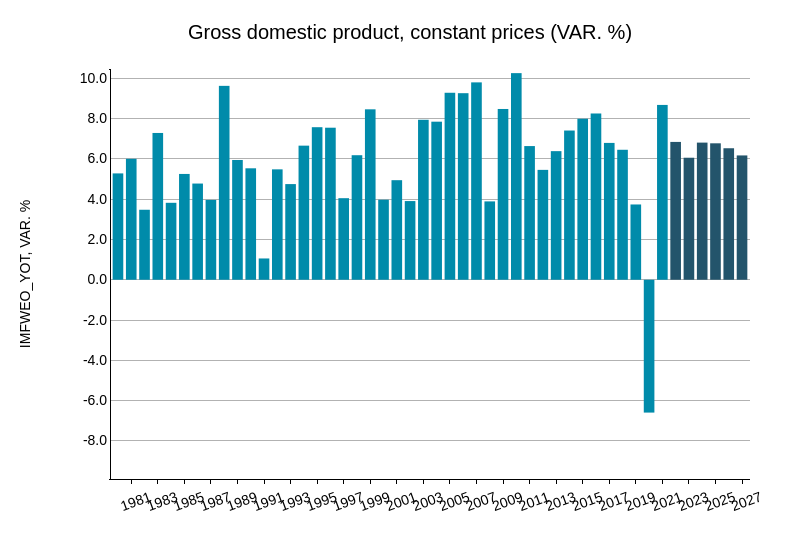
Source: ExportPlanning.
The economic development of the last twenty years has also led to a sustained increase in the level of wealth per capita and the gradual consolidation of a middle class: it is estimated that today the level of GDP per capita is close to $2,500 per year, and is five times higher than at the beginning of the century.
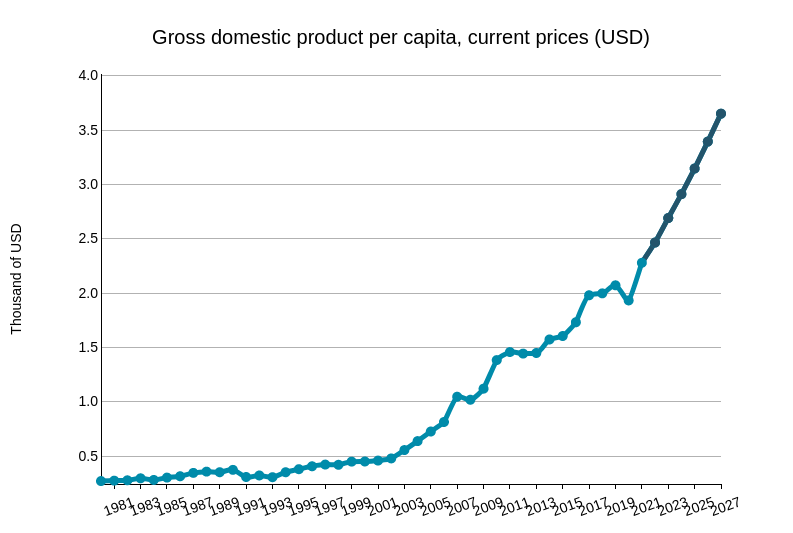
Source: ExportPlanning.
Despite the opportunities and growth in domestic demand, India's trade regime and regulatory environment remain relatively restrictive. Notwithstanding the bureaucratic simplifications of recent years, the market remains complex and geographically diverse.
The country's policy of self-reliance and promotion of 'Make in India' strongly influences the country's import structure, which focuses on the import of particular types of goods for which domestic availability (or production) is limited, or of those products aimed at strengthening the manufacturing capacity of domestic industry.
Structure of Indian imports
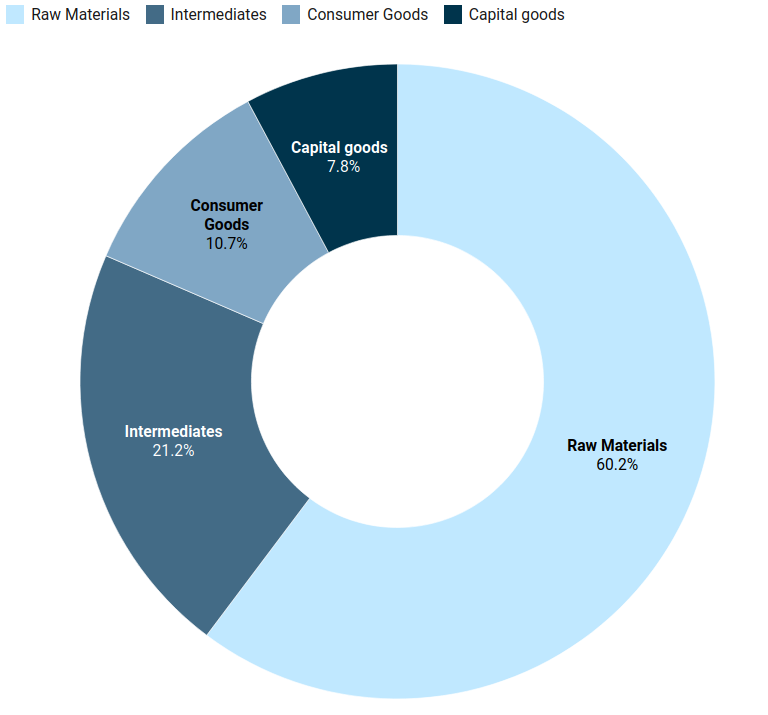
Source: ExportPlanning.
The 60% of India's imports are commodities, with oil and coal, as well as precious metals, accounting for the lion's share, reflecting the country's significant role as a manufacturing hub. The following graph focuses on the remaining families of goods, showing for each the weight it has on total Indian imports, net of raw materials.
India: major import sectors
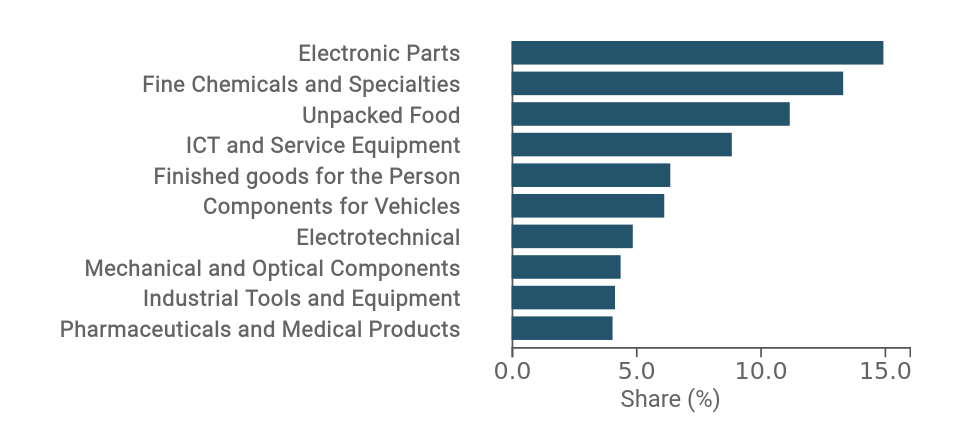
Source: ExportPlanning.
With a value of USD 33 billion, the electronic components industry (processors, telephone parts, integrated circuits, etc.) is the leading item in India's imports net of raw materials, accounting for about 15%. This result testifies to the increasing relevance of Information Technology as a driver of modernisation of the local economy and the country's growth in ICT specialisation. This evidence is not only related to the manufacturing sector, but also to the country's significant importance in the management of IT professional services.
Imports in the chemical sector are also particularly significant, where imports of intermediate goods for the pharmaceutical industry stand out. For the sector, India is in fact a major player on the international scene, mainly due to its role as a supplier of generic drugs. India's imports of fertilisers also appear significant, given the significant role of the food-processing industry within the local economy.
On the other hand, the weight of imports of consumer goods appears to be more limited, with the Fashion System being the most significant item, led by the jewellery sector.
Conclusions
In a scenario in which the growth of the world economy is shifting its centre of gravity more and more to the East, India is gaining increasing weight, providing a framework of significant opportunities. With the G20 presidency, international observers have also recognised the country's potential to become a major geopolitical player in the new international configuration. However, there is no shortage of challenges, imposed by a still stringent regulatory environment and an import structure that is still strongly geared to the transformation processes of local industry and the needs of the production apparatus. The objectives of the 'Make in India' programme (advanced manufacturing, energy transition and digital economy) and the EU's growing attention towards the Indian Tiger could represent a turning point in relations between the two areas, in order to exploit a potential that has not yet been fully exploited.

